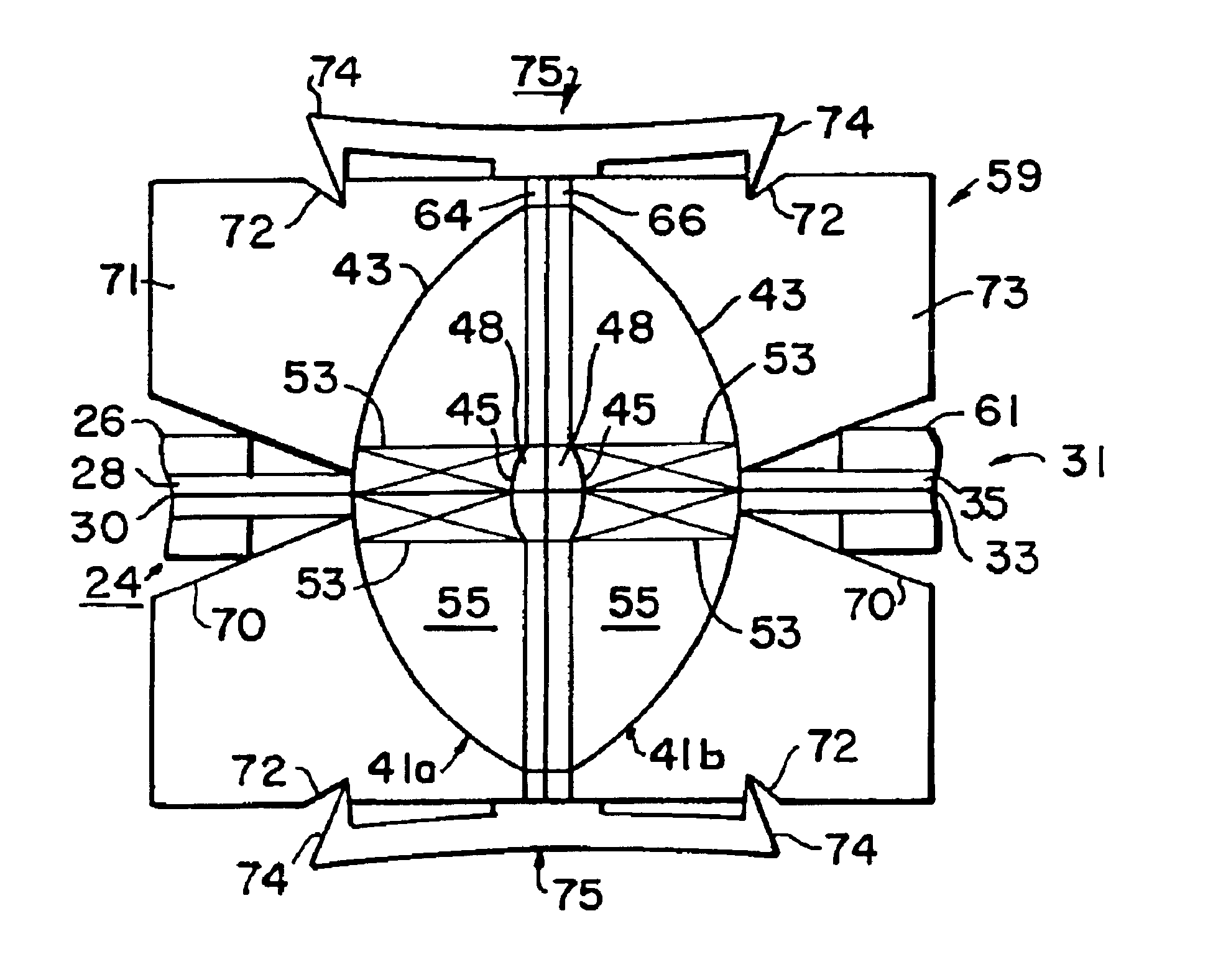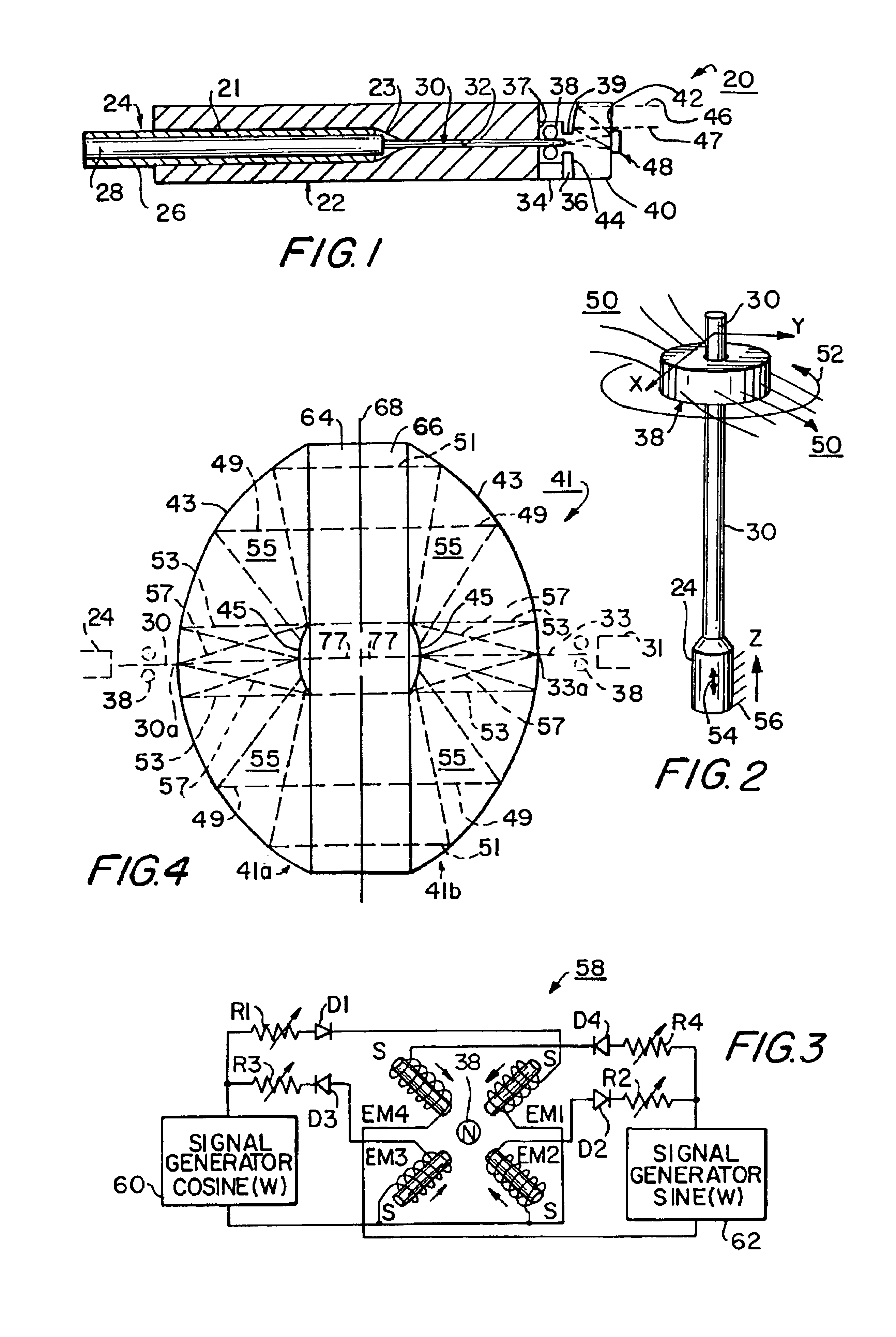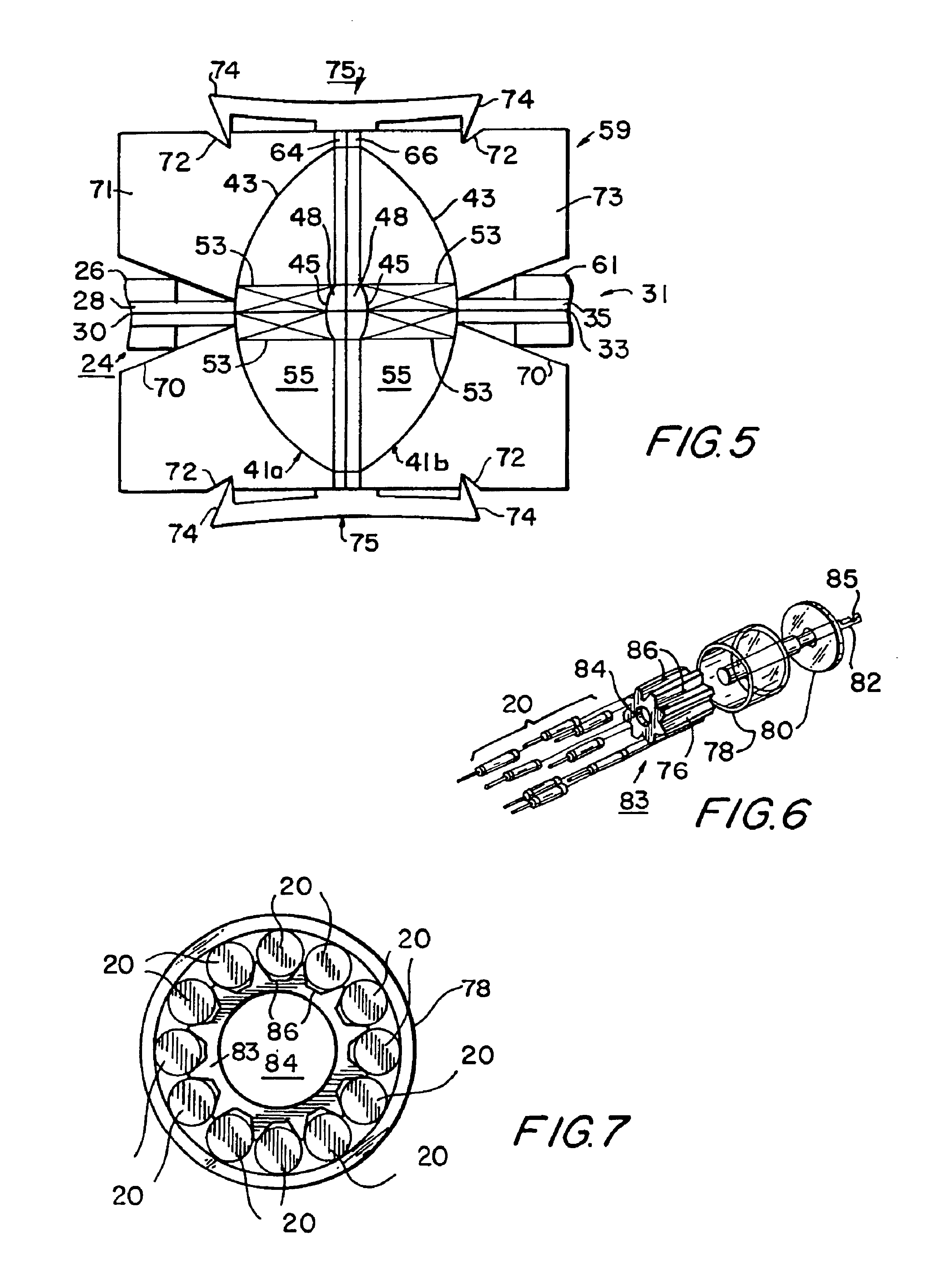Electro-optical transducer with multi-reflector beam-expanding and collimating input/output device
- Summary
- Abstract
- Description
- Claims
- Application Information
AI Technical Summary
Benefits of technology
Problems solved by technology
Method used
Image
Examples
Embodiment Construction
Terminus
[0048]FIG. 1 is a cross-sectional view of a fiber-optic cable terminus 20 constructed in accordance with the present invention.
[0049]Terminus 20 includes a standard ceramic ferrule 22 with a relatively large bore 21 which tapers down at 23 to form a substantially smaller fiber conductor passageway 32.
[0050]Fitted into the ferrule is the end of a fiber-optic cable 24 including a light-conducting single-mode fiber 30 extending through the passageway 32, and cladding 28 having an index of refraction different from that of the light-conducting core 30, and, finally, an outer protective coating 26. Typical dimensions for the cable are: The outer diameter of the cable with the coating 26 is 250 micrometers; the diameter of the cable without the coating 26 is 125 micrometers; and the diameter of the light-conducting fiber or core 30 is 8 micrometers.
[0051]The dimensions of the cable are small; especially the diameter of the core, which has a diameter of only 0.008 millimeters (arou...
PUM
 Login to View More
Login to View More Abstract
Description
Claims
Application Information
 Login to View More
Login to View More - R&D
- Intellectual Property
- Life Sciences
- Materials
- Tech Scout
- Unparalleled Data Quality
- Higher Quality Content
- 60% Fewer Hallucinations
Browse by: Latest US Patents, China's latest patents, Technical Efficacy Thesaurus, Application Domain, Technology Topic, Popular Technical Reports.
© 2025 PatSnap. All rights reserved.Legal|Privacy policy|Modern Slavery Act Transparency Statement|Sitemap|About US| Contact US: help@patsnap.com



